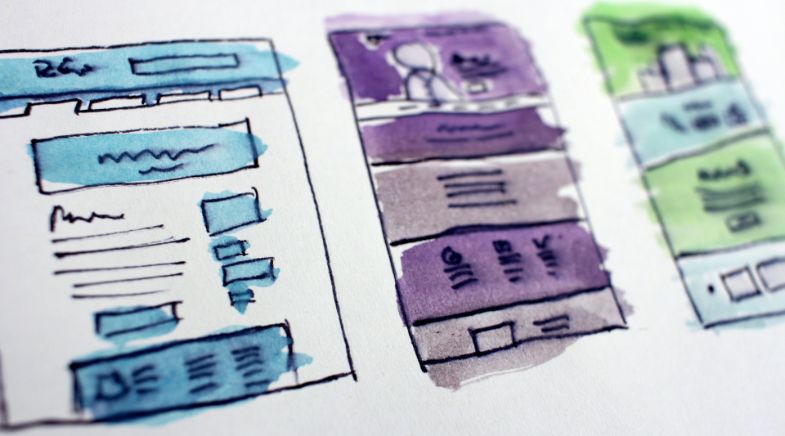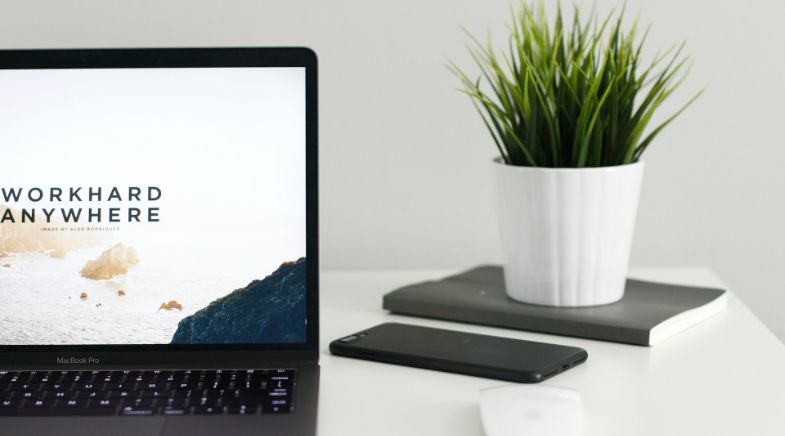Website design has evolved over the years.
Ever since the internet was first invented there has been a need to develop better and more visually appealing websites.
Now there is an abundance of cool and immersive web designs that businesses are adopting.
Although a new subject has started to appear within the web design space.
Looking to create a site with exclusive content or member-only access? Our membership website design service helps you build a seamless, user-friendly platform.
The need for sustainable web design.
Sustainability is massive in the modern world we live in.
So it’s becoming ever more important for businesses to have a sustainable approach to the design of their website.
In this blog, we’ll go over sustainable web design in depth so you can understand everything there is to know about this intriguing yet increasingly important topic.

What is Sustainable Web Design?
Sustainable web design is an approach to creating and maintaining websites that prioritise environmental responsibility, resource efficiency and long-term viability.
It involves implementing practices that minimise the carbon footprint associated with web hosting and development.
Sustainable web design aims to reduce the environmental impact of digital technologies by incorporating energy-efficient practices
Doing so can minimise electronic waste, and promote awareness of eco-friendly choices among both web developers and users.
How to Make Your Website More Sustainable
Here’s a comprehensive guide to sustainable web design:
1. Efficient Design
By focusing on design principles you can use these as a guiding light when designing a website.
These principles can:
- Prioritise performance.
- Reduce resource consumption.
- Enhance user experience.
If your website is sustainably designed it can be faster at loading. When it’s faster at loading this reduces server energy which contributes to energy consumption.
While this may seem small in one instance it can make a huge contribution when you consider how many websites depend on these servers.
Part of your efficient design could be clean and optimised code.
This is a hallmark of efficient design.
Reducing unnecessary lines of code and eliminating redundant scripts not only improves website performance but also lowers energy consumption on the server side.
Regular code audits and optimisations contribute to a more sustainable online presence.
2. Energy-Efficient Hosting
Yes, even hosting services are going green!
Whenever possible you should opt for hosting services that use renewable energy sources and have energy-efficient data centres.
We’re already aware of the large carbon footprint that data centres leave.
By going for green web hosting you can do your part to contribute to a green online space.
These servers will usually operate off of green renewable energy in the form of wind, solar and other renewable sources.
Data centre design can also play a key role in going for a green hosting solution. These centres produce huge amounts of heat.
But unfortunately, heat and mass amounts of important electronics don’t go well together. So they need to be cooled.
That’s where a cooling system comes in.
It’s important these cooling systems are efficient and that the placement of the servers is in an optimal position for the cool air to circulate.
Now, we know that the layout designs of servers are out of your control unless that is in fact your job.
But it’s important to highlight how choosing a green web hosting service can help make your website more sustainable.
3. Regular Updates
Software needs to be updated quite regularly.
If it doesn’t then it can perform slower, develop bugs and ultimately stop performing correctly.
These updates help contribute to a more sustainable website as you’ll be in line with up-to-date standards and any bugs that develop can be straightened out.
Websites come with an abundance of plugins and extensions.
These all help keep the website running as smoothly as possible. Once these get compromised that’s where problems develop.
So always ensure all of your software is updated to the latest version, otherwise you could end up with a less responsive site.
A less responsive site could give a customer a headache when trying to order your latest product.
This headache could turn into frustration.
Once you frustrate a customer they won’t be likely to use your site again.
They’ll just use a competitor site because they manage to update their software.
See the ripple effect?
Gotta think of the big picture!

4. To Video or Not to Video?
We may be going against the grain here but if you want a more sustainable website, you may have to be ruthless in deciding to post video content.
Now, don’t get us wrong, we’re huge proponents of video content.
We advise using it so you can gain a competitive edge over your competition.
But video content on your site is one of the biggest drains on energy.
Whilst you may be a modern-day Di Caprio in front of the camera, it might be best to keep the video content on TikTok and off of your main site.
This depends on your business as well.
If you’re a content agency then showcasing your video content is obviously going to be hugely beneficial.
But if you’re a local hardware store, you could probably afford to not have videos littered on every page of your site.
Unless you really really want to.
In which case, it’s lights, camera, ACTION!
5. Chop Your Copy Like a Butcher
Imagine you are a butcher.
Your job is to get the leanest meat possible.
To do so you need to chop everything else until you get that supreme lean piece of succulent meat.
The same applies to your website copy.
You must become a butcher (figuratively speaking of course).
Having a wordy site may look like you know what you’re talking about but for the most part, the majority of it does not get read.
This is why you need to make your copy as concise and ‘scanable’ as possible.
So how does this help create a sustainable website?
- Less copy means less time spent scurrying around the screen.
- Less scurrying means less screen time.
- Less screen time results in less energy needed to power your site.
Often it’s the small details that can make the biggest difference.
The best-selling author, Steve Krug, talks a lot about this in his book ‘Don’t Make Me Think’.
What are the Benefits of Sustainable Web Design?
Adopting sustainable web design practices can offer numerous benefits, not only for the environment but also for the overall success and longevity of your website. Here are some key advantages:
- Environmental Impact – Sustainable practices, such as using renewable energy and optimising server efficiency, can significantly decrease the carbon footprint associated with hosting and maintaining a website.
- Faster Load Times – Optimisation techniques lead to quicker page load times, enhancing the user experience and reducing bounce rates.
- Responsive Design – A focus on sustainability often goes hand-in-hand with creating mobile-friendly and responsive designs, improving accessibility for users on various devices.
- Cost Savings – Sustainable practices, such as server and code optimisation, can lead to reduced energy consumption, resulting in lower hosting costs.
- Positive Brand Image – Demonstrating a commitment to sustainability can enhance your brand image and attract environmentally conscious users.
- Regulatory Compliance – Adhering to sustainable web design practices may help you comply with emerging environmental regulations and industry standards.
- Improved website Rankings – Faster-loading websites and those optimised for mobile devices are often favoured by search engines, positively impacting SEO rankings.
- Future-Ready Design – Sustainable web design principles often align with scalability and adaptability, making it easier to incorporate new technologies and practices as they emerge.
- Lower Maintenance Costs – Well-optimised code is easier to maintain and update, reducing the time and resources required for ongoing maintenance.

Sustainable Website Designs for Businesses – Blaze Media
If you want to become a green energy warrior then at least now you’ve got this guide to make your website as sustainable as possible.
Even if you aren’t as bothered about the energy side of things, having more sustainable websites brings plenty of benefits to those who visit your site.
If you’re a business owner who wants a new website or wants to update their current one then we can help.
We’re a full-service digital marketing agency that has delivered countless new websites to a variety of businesses.
We also practise what we preach when it comes to sustainable web design.
If you want us to incorporate sustainability into your site we can certainly do so.
Contact us today and find out more.
Alternatively, for more information on web design please read our guide on how to make your website stand out.


